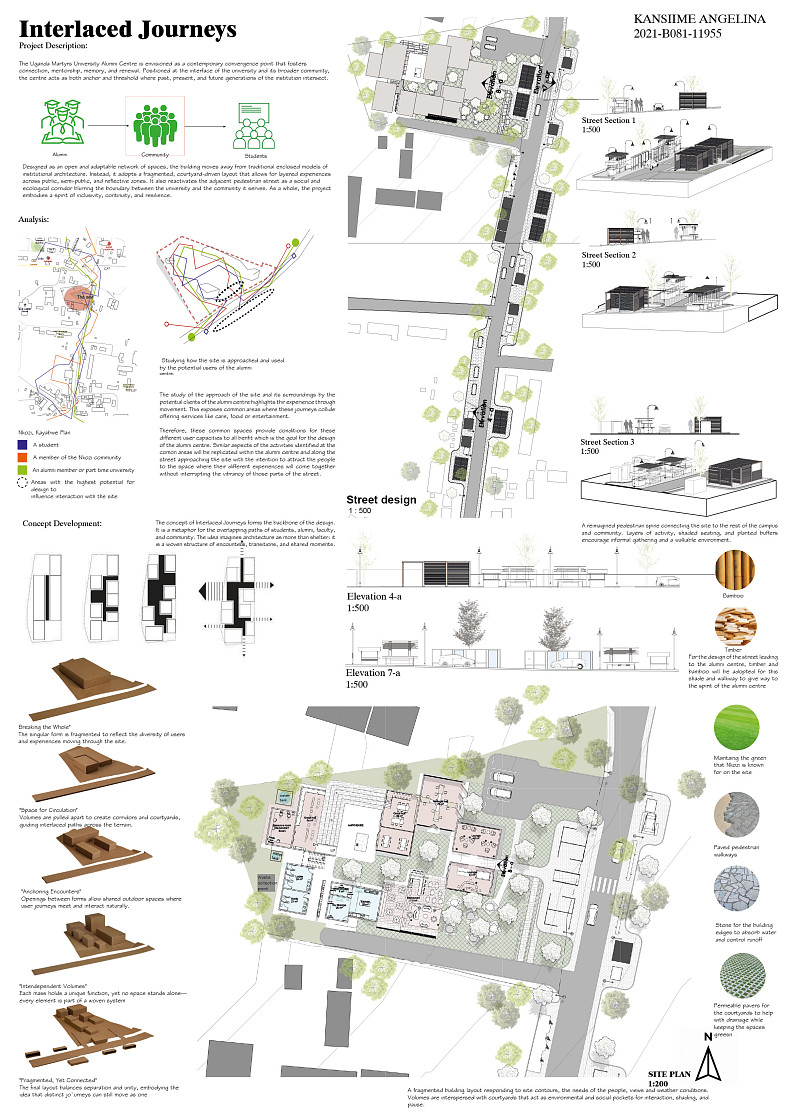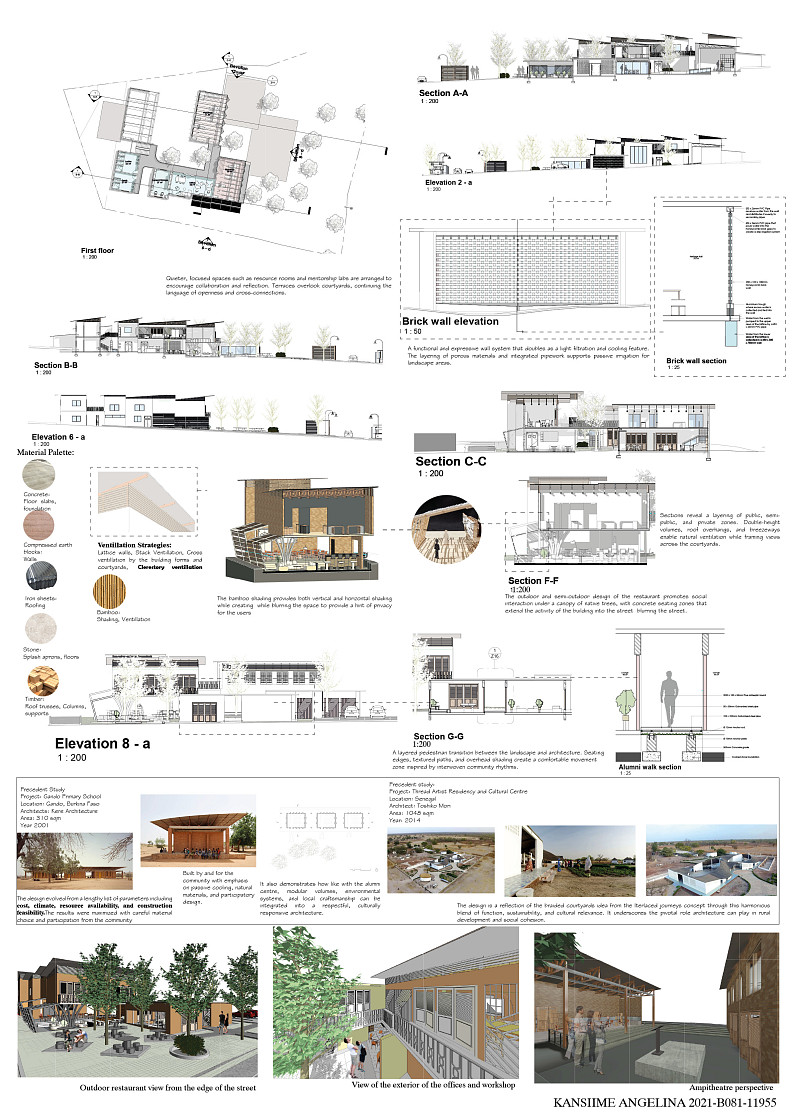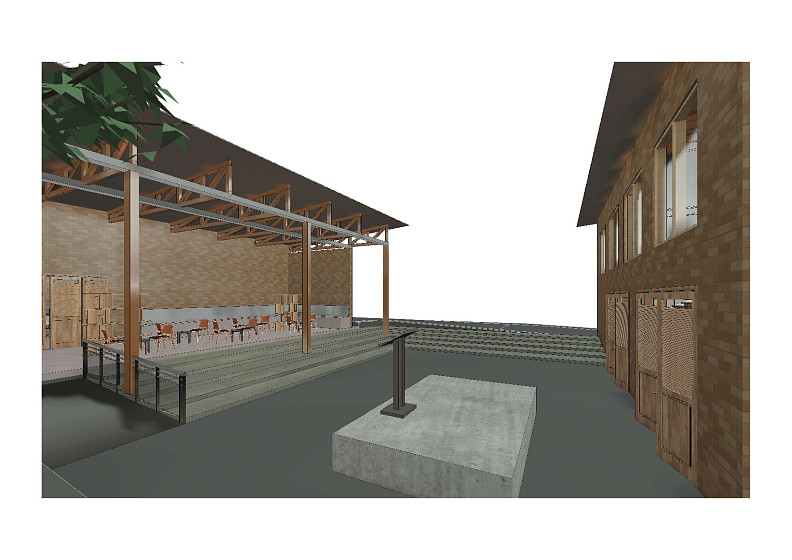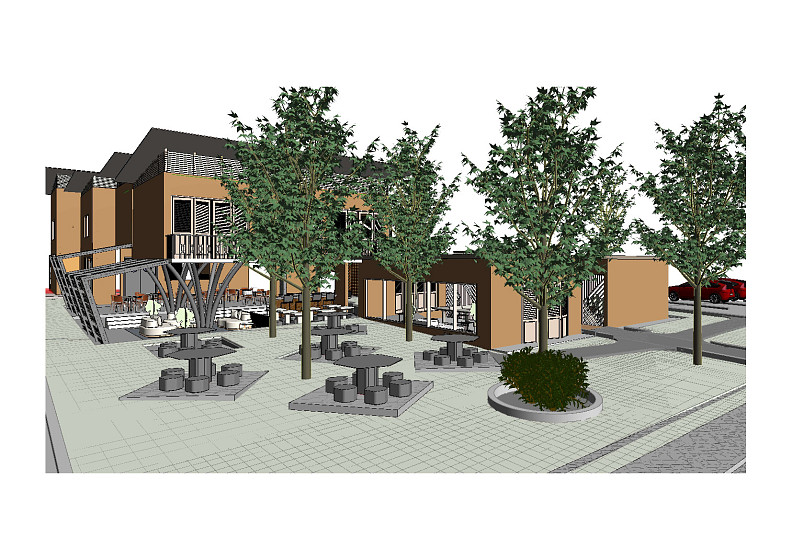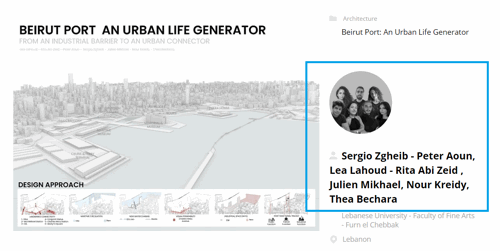Interlaced Journeys

Project idea
The study of the approach of the site in a small town in Uganda and its surroundings by the potential clients of the alumni centre highlights thir experience through movement. This exposes common areas where these journeys collide offering services like care, food or entertainment.
Therefore, these common spaces provide conditions for these different user capacities to all benfit which is the goal for the design of the alumni centre. Similar aspects of the activities identified at the comon areas will be replicated within the alumni centre and along the street approaching the site with the intention to attract the people to the space where their different experiences will come together without interrupting the vibrancy of those parts of the street.
Project description
The Uganda Martyrs University Alumni Centre is envisioned as a contemporary convergence point that fosters connection, mentorship, memory, and renewal. Positioned at the interface of the university and its broader community, the centre acts as both anchor and threshold where past, present, and future generations of the institution intersect. Designed as an open and adaptable network of spaces; lounge, restarant, ampitheatre, hall, library the building moves away from traditional enclosed models of institutional architecture. Instead, it adopts a fragmented, courtyard-driven layout that allows for layered experiences across public, semi-public, and reflective zones. It also reactivates the adjacent pedestrian street as a social and ecological corridor blurring the boundary between the university and the community it serves. As a whole, the project embodies a spirit of inclusivity, continuity, and resilience. The concept of Interlaced Journeys forms the backbone of the design. It is a metaphor for the overlapping paths of students, alumni, faculty, and community. The idea imagines architecture as more than shelter: it is a woven structure of encounters, transitions, and shared moments.
Technical information
The sections reveal how the architecture negotiates climate, movement, and memory. Volumes are
staggered and interlaced with courtyards, allowing for cross-ventilation, filtered light, and framed
views. Split roofs enhance stack ventilation while guiding rainwater into bioswales below. Thick
rammed earth walls anchor the structure thermally and symbolically, while lighter bamboo screens
modulate openness. Vertical layering of space from grounded social zones to elevated reflective
areas reinforces the idea of a continuous journey, unfolding through thresholds of air, light, and
interaction. Material transitions express layered meaning. Thick earthen walls convey permanence
and memory, while woven bamboo screens and clay pot walls filter light, air, and view
representing openness without exposure. Shaded verandas and adjustable elements respond
to climate and time of day, enhancing user control and comfort. Each detail reinforces
the spatial identity of the centre as a place of generosity, dialogue, and regeneration

